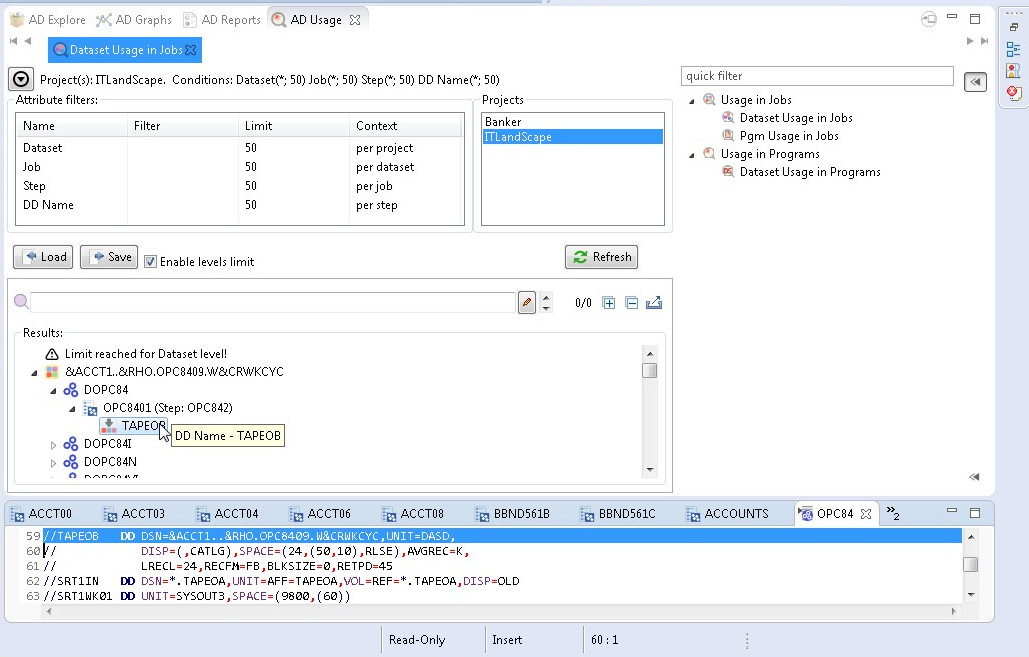AD Usage Analysis Tab
The Usage tab displays a set of parameters that allow the user to determine in what way a certain type of entity (such as SQL table, file, include) is used throughout the resources of the selected project.

The central part of the screen displays the list of attribute filters. The breadcrumb displays the selected projects, the selected attributes together with the filters set for each attribute.
Click the Filter field to the right of an attribute name and enter the filter that you want to use for the attributes' names. Only the elements that match the name filter are displayed in the Results area. Special characters can be used; for example, you can use the special character "*" and add to it either prefixes or suffixes as in "*AAA" or "AAA*". To limit the number of attributes of a certain type returned by the filtering operation, use the fields in the Limit column. The default limit is 50; the maximum limit can be set in the corresponding Usage Settings section from the Preferences dialog. For details, see Usage Settings. The Context column displays the context of the filter operation where relevant. The context of the first attribute filter in the list is the project. The context of any other attribute filter in the list is the attribute above it in the list.
To the right of Attribute filters area, the list of projects is displayed.
Use Save to save the current filter configuration. Use Load to load a previously saved filter configuration.
By default, Enable levels limit is selected and the number of elements which are presented in the Results area is limited by the values set in the Limit column. If you deselect this option, the Limit column from the Attribute filters area disappears and the Results area displays all the results of the analysis. Press Apply to apply the selected filters.
When the filtering operation is finished, you can use the black arrow button in the upper left corner of Attribute filters area to hide it and maximize the Results area. To see the current usage analysis parameters in a separate tab, use the button move to separate view in the upper corner of the tab.
The results of the filtering operation are displayed in the Results area. Use the search field to locate a specific element in the Results tree. Click the adjacent button find only annotated to filter the search results so that only the annotated elements are shown. In the upper right corner of the Results area, the following buttons are available.
Expand all, click this button to expand the tree.
Collapse all, click this button to fold all the tree branches.
Export Results to CSV File, use this button to export the results together with the used filter configuration.
Place the mouse cursor over a node in the tree to display a tooltip that presents the element category and name. Once you select a tree node, the area to the right of the screen is updated and displays the graphs, reports, and usage analyses that can be generated for the selected element.
In the tree, double-click an element to open the corresponding file at the occurrence line. The nodes available in the tree depend on the current analysis. For more information on the nodes available for each usage analysis, see Usage.
Node pop-up menu
Select a node from the tree in the Results area then right-click to display the pop-up menu. The number of options available depends on the type of node selected. For more information on all the Usage analyses that can be generated for each type of project, see Usage.